Security System / Burglar Alarm Components
Before you can even start the planning phase of your alarm system, you need to understand what components you may need to use. Alarm components can be broken up into several categories:
- Input Devices: These are the sensors that will activate the alarm when someone breaks into your home. Examples include door and window sensors, motion detectors, and glass break sensors.
- 24 hour Input Devices: These are special types of sensors that activate the alarm whether it is turned on or off (24 hours a day). These include fire/smoke sensors and water leak sensors.
- Output Devices: Example output devices include horns/sirens and strobe lights. These tell you and your neighbors that the alarm has been activated and scare off intruders.
- Alarm Panel: The alarm panel is the brains of the alarm system. This consists of the circuit board, power supply and battery to provide power, your phone line connection, and the a metal box to secure it all.
- Keypads: These are used to activate/deactivate the alarm, determine what zone has tripped the alarm, perform programming and diagnostics activities.
Types of Sensors / Input Devices
Door SensorDoor sensors will trigger the alarm when the door is opened. These should be installed at every exterior door including the door to the garage. These sensors can also be used as a door chime which makes a quick beep when a door is opened and the alarm is not active. Installing the round plug style sensors can void the warranty on your door and your builder may not let you install them until you have purchased the home. You could use window style sensors on a door (although they will not be hidden) or you could pre-wire the sensor and drill the hole in the door later after you move in.

Window sensors will trigger the alarm when the window is opened. Having a separate channel for each window will quickly use up all the available channels on your alarm panel (this is covered in the Alarm Planning guide). Unlike door sensors, these sensors are visible on the window. There are types of window sensors that are hidden, but drilling into a window to hide a magnet is usually a very bad idea. You will probably break the seal on your window and any drilling in the window will void the warranty. Your best bet is to use 2-way tape to attach the sensor to the window so that no drilling is required. Sometimes you may want to activate the alarm at night even though a bedroom window is open. This can be done, but obviously that window is not protected by the alarm. Using motion detectors may be a better option.
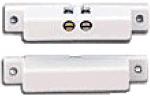
Motion detectors will trigger the alarm when they detect motion in their area of coverage. Typically these are not installed on the second floor. You don't want the alarm going off when someone goes to the bathroom in the middle of the night. Motion detector usually have 90 degree area of coverage, so installing them in the corner of the room works best. Motion detectors should be installed in every major room of the home and if necessary they should also protect the alarm panel (in the basement or a utility closet). I prefer to install the motion detectors near the 4 exterior corners of the first floor so that they also cover the hallways. In an existing home you may choose to install them on an interior wall so that you don't have to deal with insulation when running the wires. Some motion detectors will detect small pets and set off the alarm, while others are designed ignore pets up to 40 or even 80 pounds. Be sure to review the specifications of the sensor before purchasing. Note: Usually motion detectors are referred to as PIR (Passive InfraRed) sensors. Some sensors utilize both PIR and microwave sensors for increased reliability.

A glass break sensor will trigger the alarm when it detects the noise or vibration of glass breaking. The model on the left is attached directly to the window and can only determine if that window is broken. These are usually used by businesses on large plate glass windows. The model on the right can detect any glass breaking within a given distance and are usually mounted toward the center of the home or near an area with a lot of windows. In the example floor plan above, the glass break sensor is facing the rear exit glass door. Dropping a glass or loud noises can sometimes trip a glass break sensor and set off the alarm. The quality and sensitivity setting of the alarm control this behavior.
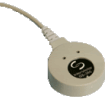
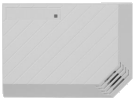
Water sensors are used to alert you or your alarm monitoring company in case there is a water leak. Typically, water problems occur in the laundry room when one of the flexible hoses to the washer bursts, in the basement near the sump pump, or near the furnace if the water run off from the air conditioner backs up. Some water sensors / alarm systems are capable of turning off the water when a leak is detected. Since the sump pump should be near the lowest part of the basement, if you only have one sensor in the basement it should be near the sump pump.
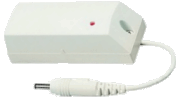
If you are building a new home then the builder will already be installing smoke detectors, but if you are paying for alarm monitoring you may want to connect these smoke detectors to the alarm system. In a new home by code the builder will place one smoke detector on every floor and in every sleeping room. These should be combination smoke/carbon monoxide detectors. Ideally they will be networked and hard wired for power with battery backup.
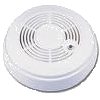
Sirens / Output Devices
Horn/SirenThe siren makes the noise when the alarm is activated. The horn on the left is intended to be hidden (perhaps in the basement) or mounted outside the home to alert neighbors. The siren on the right should be mounted near the center of the first floor. Although a horn/siren is optional, it is strongly recommended since it will do the most to scare away a burglar.
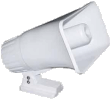
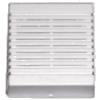
Mounting a strobe light outside the home is another way to alert neighbors that your alarm has been activated. Strobe lights can also be used inside the home for the hearing impaired.
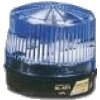
Other Alarm Components
KeypadKeypads are used to activate and deactivate the alarm. They can also be used to indicate which sensors (zones) are currently active. More advanced keypads can report a history of past alarms and perform programming functions. A keypad should be located near the entrance/exit of your home that you are most likely to use so you can activate the alarm as you leave. You can also install a second keypad in the master bedroom to activate the alarm system at night.
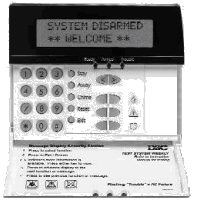
The main panel is the "brain" of the alarm system. The circuit boards are placed in a locked metal box that also contains a battery backup. All wires for the alarm system will run to this panel. The panel should be located in the basement (if available) otherwise it should be placed in a utility closet.
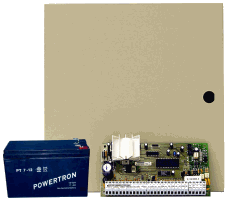
Your best bet for alarm wiring is to purchase a roll of solid 4 conductor 22 AWG alarm wire (black, red, green, & yellow). Although solid copper wire doesn't bend as easily as stranded wires, I prefer using it because it eliminates the chance that a loose strand of wire will cause a short. With lots of small screw down connectors all right next to each other, one strand could easily come lose and touch the wrong screw which could break the alarm or cause a false reading. Door and window sensors and horns only require 2 conductors, but keypads, motion detectors and glass break sensors will require 4 wires. Since the price of 2 and 4 conductor wire is so similar, you may be better off with a single 500 ft roll of 4 conductor wire. If you plan on wiring every window, then you will probably need 2 spools of cable and getting a spool of 2 conductor wire (black & red) would make sense.
Note: 22 gauge wire cannot be used for smoke detectors and power. The smoke sensors and the power wires for the alarm typically should be 18 AWG or better. Review the manual for your security system, smoke detectors, and any local fire codes more information.
